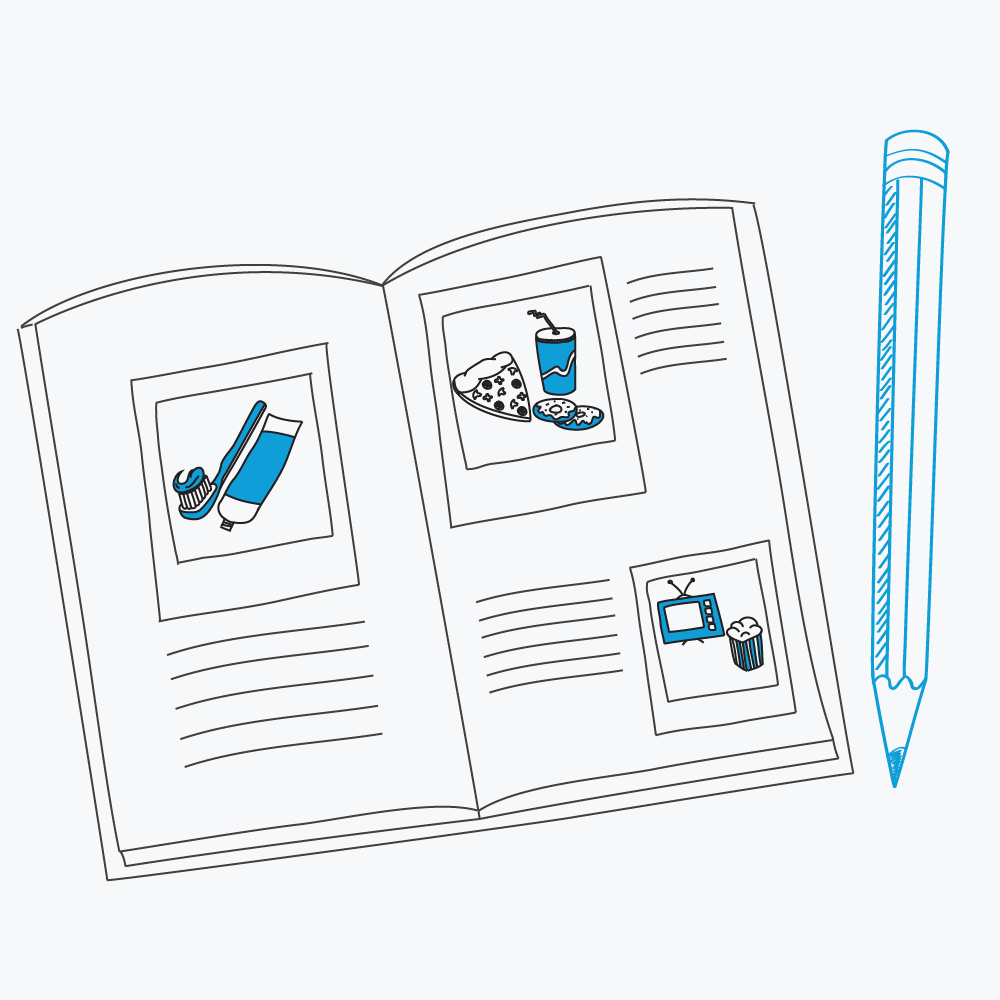Cultural probes
Why?
Cultural probes is a tool inspired by the fields of anthropology and ethnography. It is based on the concepts of user participation and self-documentation. The idea is to make users gather information on aspects of their everyday-life themselves, without the physical presence of a researcher that may affect their answers. This user-feedback will help the students discover the needs and values of users that may otherwise be difficult to observe or uncover through an interview alone.
How?
The students ask users or other stakeholders to take photos or video recordings of their everyday-life situations related to the problem (e.g. their morning rituals, going to the cinema, buying take-out or a situation at the office). Supplementary, the students provide the participants with a notebook or a journal, where they can document their experience, or a scheme with central questions that they have to answer.
It is often valuable to make an interview in connection with cultural probes as to ask elaborating questions about the material. For example, ‘Why did you take this particular photo, ‘What does it mean to you?’ Moreover, the students can also use the method as a follow up on an interview in order to look further into some aspects of the user’s experience.
Tips
The motivation of the participating users or stakeholders is important to consider when working with cultural probes. Thus, the students should take contact during the process and make sure that the participants fully understand their task, and that they have all the necessary information and materials. The students can also motivate the users by rewarding them for their participation. For example, by giving them a model or some other materials that the users helped produce in the process.
Literature
Graver, B.; Dunne, T. and Pacenti, E. (1999). Design: Cultural probes, in Interactions, Volume 6, Issue 1, ACM Press, New York, pp. 21-29.
Mattelmäki, T. (2006). Design probes, PhD thesis, University of Art and Design Helsinki, Publications series A69.

